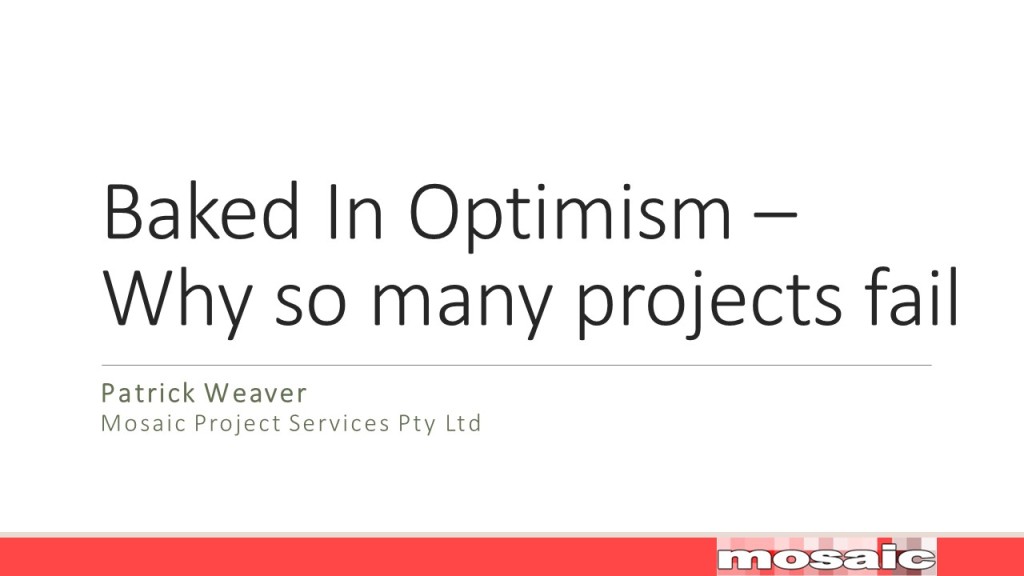
In our previous blog, AI is coming to a project near you!, we identified a large number of project management software applications using Artificial Intelligence (AI) and the rapid spread of the capability. But what exactly is AI? This post offers a brief overview of the concept.
AI is not as new as some people imagine. Some of the mathematics underpinning AI can be traced back to the 18th century and many of the fundamental concepts were developed in the 20th, but there was very limited use of AI. The ability to make widespread practical use of AI required the development of computers with sufficient processing capabilities to process large amounts of data quickly. Each of the developments outlined below were enabled by better processors and increased data storage capabilities.
Types of AI
The modern concept of intelligent processing is more than 50 years old, but the way a computer application works depends on the design of the application. Very broadly:
Decision tables have been in software since the 1960s, the decision table applies a cascading set of decisions to a limited set of data to arrive at a result. The ‘table’ is hard-wired into the code and does not change. Many resource levelling algorithms are based on decision tables to decide what resources get allocated to which activities on each day.
Expert systems, known as rule-based systems in the 1960s, use explicitly crafted rules to generate responses or data sets based on an initial question. These systems were the basis of many automated Chatbots and help systems. The system’s rules are ‘hard-wired’ and do not change without external intervention.
Data mining was developed in the 1990s. The application uses generalized instructions to look at large volumes of data to discover previously unknown properties. Generalized processes means the data being examined does not need to be labelled or predefined. The application works out a suitable structure, and then draws classes information from within the data set. These system can be interactive, but are not self-learning. Extracting knowledge from ‘big data’ supports Business Intelligence and other business and marketing improvement initiatives.
Machine learning (ML). Basic ML is similar to data mining. It concerned with the development and study of statistical algorithms that can effectively generalize to perform tasks without explicit instructions. ML focuses on prediction and recognition, based on properties the application has learned from training data. The basic functions of ML were defined in the early 2000s and the concept continues to evolve and develop. The basic ML approach can be seen in a range of project management tools where the application recommends durations, lists likely risks, or performs other predictive assessments on your current project, based on data from previous projects.
Algorithmic Decision Making, a subset of ‘expert systems’ focused on using conventional machine learning and statistical techniques such as ordinary least squares, logistic regression, and decision trees to automate traditional human-based decision-making processes. Research suggests, well designed algorithms are less biased and more accurate than the humans they are replacing, improving predictions and decisions, but care is needed; they can also perpetuate blind spots, biases and be built to be fundamentally unfair.
Generative AI (Gen AI) extends the capability of ML. Gen AI uses generative artificial neural networks and ‘deep learning’ to deliver enhanced performance. Gen AI has been applied to large language models (LLM), computer vision, robotics, speech recognition, email filtering, agriculture, medicine, and many other fields. Each branch of development takes the basic principles of Gen AI and adapts them to the specific needs of the researchers. Latest trends are linking different strands of Gen AI to create new things such as generating pictures from verbal descriptions, and linking Gen AI to the IoT (Internet of Things) and additive manufacturing functions to produce computer designed ‘stuff’.
Large language models (LLM) are the branch of generative AI with most direct relevance to project management. LLM uses deep learning algorithms that can perform a variety of natural language processing (NLP) tasks. They are trained using massive datasets which enables them to recognize, translate, predict, or generate text or other content. LLM applications must be pre-trained and then fine-tuned so that they can solve text classifications, answer questions, summarize documents, and generate text, sound, or images. The challenge with LLM is in the training materials, the system only knows what it has been taught. This branch of Gen AI burst into prominence with the development of ChatGPT. Its developer, OpenAI (a research company), launched ChatGPT on November 30, 2022 – a year later and ChatGPT has world-wide attention.
LLM underpins most of todays advanced AI applications and can generate content across multiple types of media, including text, graphics, and video. While early implementations have had issues with accuracy and bias the tools are improving rapidly.
Progress to date indicates that the inherent capabilities of Gen AI will fundamentally change enterprise technology, and how businesses operate. Rather than simply requiring technical skills, employees will also need critical thinking, people skills, and a good understanding of ethics and governance processes.
In the four months from January to April 2023 the percentage of employees in Australia using Gen AI grew from 10% to 35%[1]. This rapid growth in use raises concerns around safety, privacy and security but businesses that do not explore the use of Gen AI in their organisations or industry risk being left behind.
The technological world is becoming very closely integrated:

Source: ACS Australia’s Digital Pulse | A new approach to building Australia’s technology skills – click to expand.
For more on the application of AI to project management software see: https://mosaicprojects.com.au/PMKI-SCH-033.php#AI
Our next post will look at the use of LLM in project management.
[1] Australian Computer Society research 2023. Australia’s Digital Pulse | A new approach to building Australia’s technology skills














